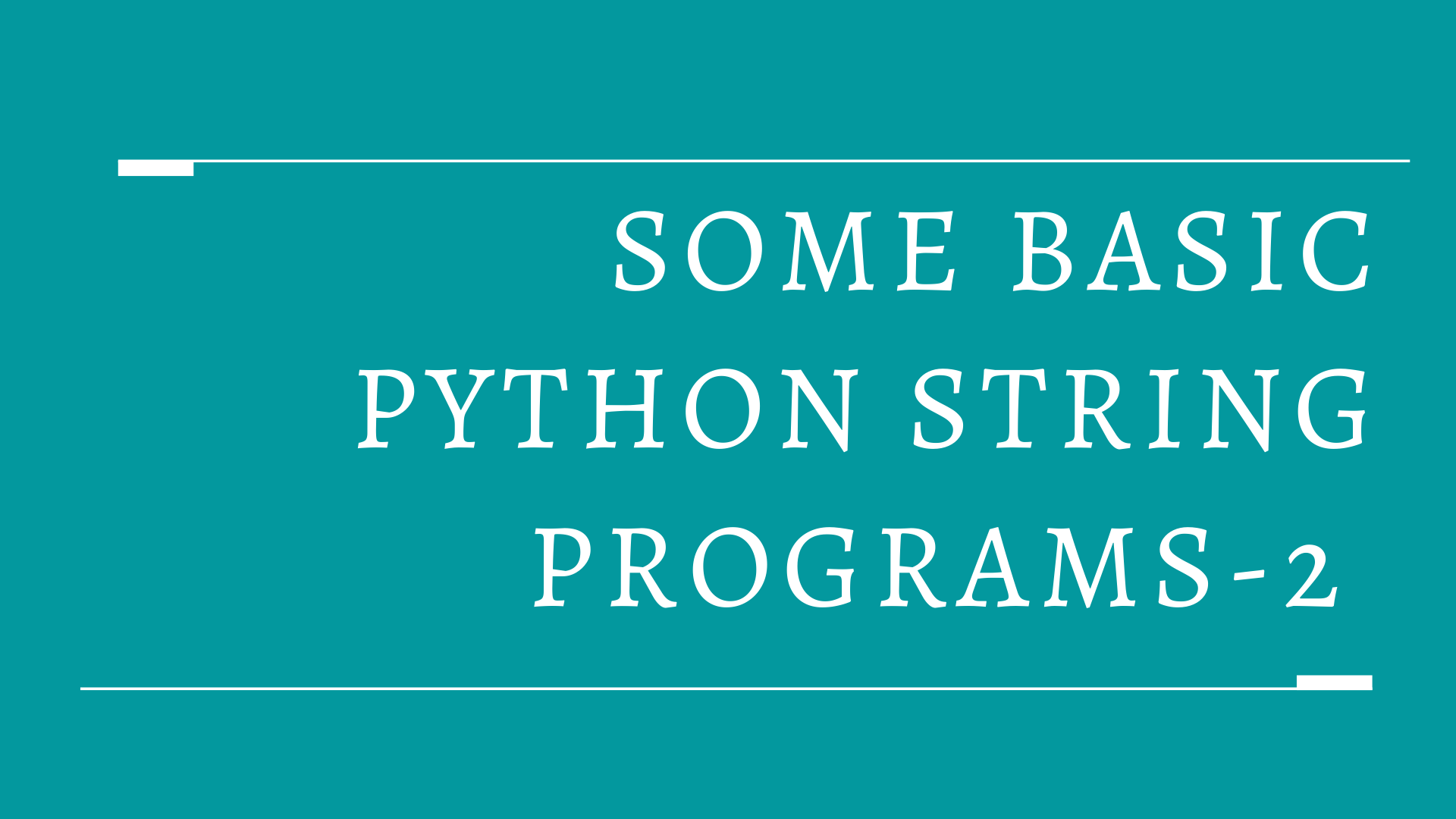Python Program to split a string into groups of n consecutive characters
string = "Beta Python: Python for U"
n = 5
split_string = [(string[ch:ch+n]) for ch in range(0, len(string), n)] #list comprehension
print(split_string)
#Output: ['Beta ', 'Pytho', 'n: Py', 'thon ', 'for U']
- List comprehension is a compact method that defines a list and its contents at the same time. Its basic syntax consists of a square bracket with an expression that is executed for each element along with for loop to iterate over each element. Read more: List Comprehension in Python – Explained with Examples
Python Program to check if a string is a subset of another string
str1 = "Beta Python: Python for U"
str2 = "tPoU"
#using all()
subset1 = all(ele in str1 for ele in str2)
if subset1:
print(f"\'{str2}\' is a subset of \'{str1}\'")
else:
print(f"\'{str2}\' is not a subset of \'{str1}\'")
#Output: 'tPoU' is a subset of 'Beta Python: Python for U'
#using issubset()
subset2 = set(str2).issubset(str1)
if subset2:
print(f"\'{str2}\' is a subset of \'{str1}\'")
else:
print(f"\'{str2}\' is not a subset of \'{str1}\'")
#Output: 'tPoU' is a subset of 'Beta Python: Python for U'
- The all() built-in method returns True If all the elements in the iterable passed are true else it returns False.
- Python treats everything as an object and objects are always true in python. However, null values, None, 0, empty data types are observed as false in python.
- The format() built-in string method returns a formatted representation of the string controlled by the format specifier. The prefix f before a string tells Python that the string is a format string. The replacement fields are expressions enclosed in curly brackets in a format string. They are evaluated at run time and then formatted.
- The backslash (“\”) character used as escape characters, directs the compiler to take a suitable action mapped to character prefixed with it.
- The issubset() built-in method returns True if all the elements of a set are present in the iterable passed else it returns False.
Python Program to remove multiple empty spaces from a string List
str_list1 = ['Beta ', " " ,'Python', "", ":", 'Python ', " ", 'for', " ", " ", " U"]
str_list2 = [ele for ele in str_list1 if ele.strip()]
print(str_list2)
#Output: ['Beta ', 'Python', ':', 'Python ', 'for', ' U']
- The strip() built-in string method removes any spaces present at the beginning and the end of the string.
Python program to count words in a sentence
string = "Beta Python: Python for U"
words_count = len(string.split())
print(words_count)
#Output: 5
- The split() built-in method breaks up a string by the specified separator and returns a list of strings. If a separator is not specified then white space is considered as a separator.
- The len() built-in function returns the number of elements present in a container.
Python program to add leading Zeros to a string
str1 = "BetaPython"
#using rjust()
str2 = str1.rjust(5 + len(str1), '0')
print(str2)
#Output: 00000BetaPython
#using zfill()
str3 = str1.zfill(5 + len(str1))
print(str3)
#Output: 00000BetaPython
- The rjust() built-in string method returns a new string of given length after filling the remaining space on the left side of the original string with the character specified.
- The zfill() built-in string method returns a copy of the string with ‘0’ characters padded to the left side of the original string.
Python program to add trailing Zeros to a string
str1 = "BetaPython"
#using ljust()
str2 = str1.ljust(5 + len(str1), '0')
print(str2)
#Output: BetaPython00000
#using format()
str3 = '{:<015}'.format(str1)
print(str3)
#Output: BetaPython00000
- The ljust() built-in string method returns a new string of given length after filling the remaining space on the right side of the original string with the character specified.
- The operator ‘<‘ is used to left-align the string and fill the remaining space of the length given with the character specified.
Python program to Right and Left Shift characters in a String
str1 = "Beta Python: Python for U"
r_swift = 4
l_swift = 3
#using * operator
str2 = (str1 *3)[len(str1) + r_swift - l_swift: 2 * len(str1) + r_swift - l_swift] #selectively slicing the string to get required string
print(str2)
#Output: eta Python: Python for UB
#using % operator
pos = (r_swift - l_swift) % len(str1) #the mod of the right swift and the left swift difference with length computes the string positions
str3 = str1[pos:] + str1[: pos]
print(str3)
#Output: eta Python: Python for UB
- The ‘*’ is used to repeat the string for a given number of times when used with a string type.
- Slicing extracts a subset of elements from a sequence. It mainly uses three parameters strat, stop, and step enclosed in square brackets []. Read more: Slicing in python
- The ‘%’ operator(modulus operator) returns the remainder of the left operand by the right.
- The ‘+’ operator concatenates multiple strings to a single string.
Related Posts-

